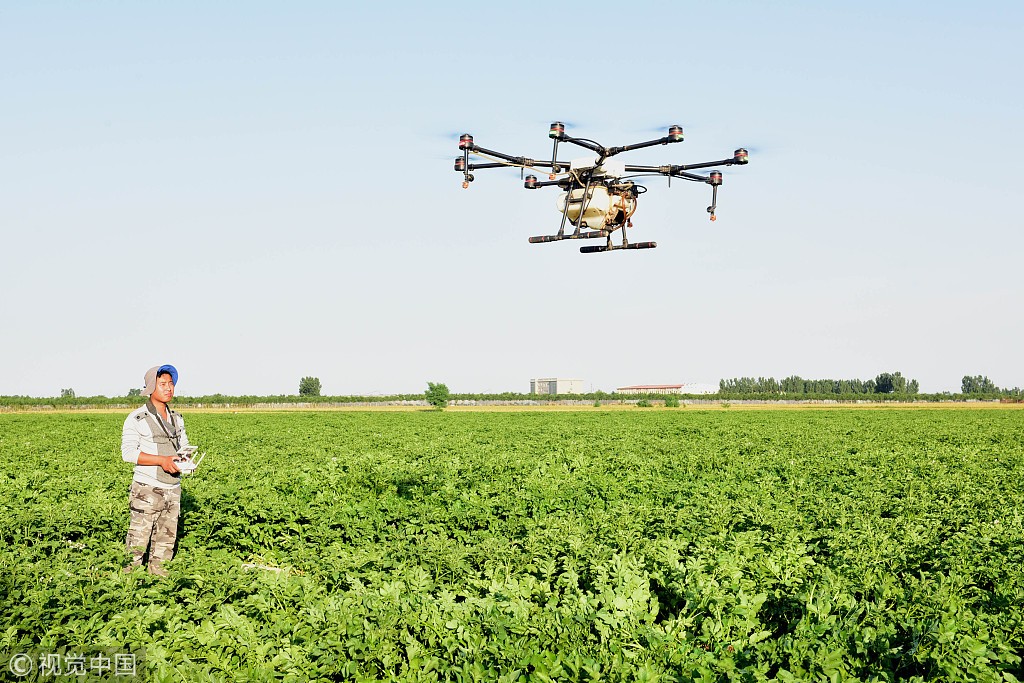
Drone pilots – the next wave of employment in Indian Agriculture
Uber & OLA drivers, Swiggy & Zomato army of delivery boys, the popularity of ride-sharing and new age technology based start-ups have created employment for a huge urban population in India. A similar trend which has the potential to employ large rural population is the concept of Drone Pilots in farming.
The wave of drone pilots offering attractive employment is already trendy in China. The world’s largest country has an estimated 287 million people who are migrant workers. To give a shape to this, 287 million workers in China is equivalent to the entire population of countries like France, Italy and Germany. These workers leave their hometown and go to the country side for working in factories and large settlements which generally pay them low wages. Today, most of them are looking at Drone Pilot as an attractive job since it has freedom of work and you’re connected to the nature.
Opportunity in India for Agri Drone Pilots:
More land under cultivation, traditional manual spraying operation with labor crisis peaking, crops grown are dependent on pesticides and bio pesticides are growing are some best examples of why I think drone pilots will be the next wave of employment.
India has the second largest agriculture land in the world with 157.35 million hectares. Insecticides, fungicides and herbicides are commonly used for pest control in Indian agriculture and often applied manually with the help of hand held sprayers.
In India, more than 40,000 different types of insects have been recorded and of these about 1,000 have been listed as potential pests for economic plants. 500 pests have caused serious damage to agricultural output at some point in time and 70 others have been causing damage more often. Therefore, pesticides have been recognized as an essential tool in India to increase agricultural production by preventing crop losses before and after harvesting. (extract from CARE report).
India, paddy accounts for the maximum share of pesticide consumption around (26%-28%) followed by cotton (18% -20%) where pesticide application is key to protect the crop.
Bio-pesticides which is an emerging category in Indian context have a huge scope to grow offering feasibility for drones to apply them precisely and faster.
Just see the success story of a year old Chinese startup who help farmers to connect with agricultural drone operators for more precise applications of pesticides and chemicals. The start-up Nongtian Guanjia in China has registered 1,000 drone operators within a short notice and has served farmers covering over 666 million square meters of farmland in 10 provinces.
Demand for drone pilots in agriculture sector will soon rise as the technology gets matured in Indian context. Besides spraying, drones will also have larger use cases covering crop estimation, monitoring etc. which will further enhance the need for such pilots in the country creating unique employment.
If we just take the two major chemical intensive crops paddy and cotton into consideration in Indian context which is grown in an area of about 55 Million hectares annually, we can create close to 70,000 drone pilots.

The Market Research Report, entitled "#AgriculturalSprayers Market" hopes to discover more information regarding market trends in”#Agriculture". The following Link will give an overview of the causes, processes, and possible effects of the Market Research Report, http://bit.ly/2mJEZi3 If you are interested looking forward this Report you can Download Scope of the Report in below link http://bit.ly/2ljsHfW
Geological exploration
4yThe drone is used only for spreading glyphosate ...
Renewable Energy, Evaluation of energy projects, interest in anything what has to do with Physics, Perpetual energie generation Myth Buster
4yShould the drones be used for monitoring and identifying of pest first before spraying? With figures of 28% consumption of pesticides/herbicides, that is a major input saving for farmers if they only apply such locally. I can imaging that farmers don't want to go into the fields checking each and every plant on possible illness and take out the bad ones. If spots can be identified the amount of work will be lower so he can put more effort in irrigation and spot fertilisation (e.g. bit more P where leaves are yellow insteat of light green, bit more N to get even green color so all ripe at the same time etc.) All the extra jobs sound nice but how is that info carried over? Newer agricultural machines are often equipped with measuring tools which record how much output was given for each part of the land. That is used for providing input to the next preparation cycle for fertilizing the land. Precision variable fertilisation. Harvestcrop flow monitoring. The device (drone) differs, the use of the data should not.
Social Impact | Agriculture | Consulting | Government Advisory | EY | CII
4yWho will sponsor the cost of drone? Any estimate on the service cost per acre of drone?